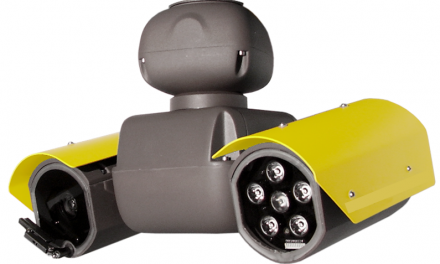This post is also available in:
![]()
![]()
![]()
![]()
A simple approach to Rotational Grazing
Poppy Frater, Dr. Roberto Ruiz,
SRUC Scotland; Neiker-Tecnalia, Spain
Rotational grazing involves small field sizes (or paddocks) combined with frequent stock movements to reduce grass wastage and provide a rest for the grass. The intensive grazing followed by a rest period leads to greater grass utilisation, improved pasture quality and greater grass yield. This means stocking rate can be increased at low additional cost.
Expected benefits
- Increase total grass yield and better pasture quality: higher protein content and digestibility, and lower fibre content.
- Improve grass utilization, i.e. reduce waste.
- Higher forage self-sufficiency and lower feeding costs.
- Better distribution of manure.
- Environmental benefits: enhance soil health, lower soil compaction risk, higher biodiversity (vegetation, micro and mesofauna), and more carbon fixation.
Preliminary conditions and Requirements
- Rotational grazing can be implemented in any environmental conditions and grazing resources available; however, the length of the resting time depends on the agro-climate conditions (temperature, rainfall, etc.), and type of pasture (natural, improved, etc.).
- Preliminary grazing planning is crucial to try to fit the resting time to the grass growth rate; the plan should be adjusted throughout the year to react to changing grass growth.
- The distribution of paddocks and access must be designed to try to avoid the passage of animals upon previously grazed fields.
- Paddocks should be separated by permanent or electric fences.
- Access of animals to water and shelter must be guaranteed, particularly in extreme conditions (hot, cold, wind or rain).
How to go about it
- Set up
A simple example is a three week rest, three day graze rotation, in combination with adaptions to suit the conditions of the season. However, this management may be optimised with shorter stays of the animals in the paddock (one day or even hours).
The three week rest, three day graze rotation will involve:
- Eight paddocks
- Moving stock every three days
- Providing a three week rest period
|
|
Rest days: |
Rest days: |
Rest days: 3
|
|
Rest days: |
Rest days: |
|
Grazing animals- 3 days |
Modification considerations
Rest period is dictated by the grass growing conditions: as grass growth slows (or desired grazing duration decreases), more paddocks need to be brought into the rotation to increase the rest period and achieve target pre-grazing heights.
General rest periods (must be adjusted according to grass growth, therefore to the local environmental conditions):
Spring: 15-24 days
Summer: 25-30 days in Atlantic conditions, to 80-100 days in dryer areas.
Autumn: 30-40 days
Winter: 90-100 days
Utilisation: The shorter the grazing duration the greater the utilisation (amount consumed) – the animals are given less opportunity to waste.
- Area and group size
Maximum group size is based on practical handling capability rather than feed supply, e.g. consider the feasibility of drenching over 500 lambs in one go. The stocking rate figures below are based on grass growth at 50 kg dry matter per hectare – it is important to know typical grass growth values for your region to adjust up or down accordingly. This is a framework, adaption will be necessary to suit grass growth on your farm. Use the guideline targets for grass height entry and exit to support movement decisions.
|
Stock |
Maximum group size |
Guide stocking rate |
Area for maximum group |
Paddock size for maximum group** |
Target grass height -Entry |
Target grass height -Exit |
|
numbers/ha* (number/acre) |
ha (acres) |
ha (acres) |
cm |
cm |
||
|
Growing cattle |
100 |
4 (1.6) |
25 (62) |
3 (7.5) |
10 |
5 |
|
Finishing cattle |
80 |
3.5 (1.4) |
23 (57) |
2.8 (7) |
10 |
5 |
|
Ewes and singles |
350 |
13 (5.3) |
27 (67) |
3 (7.5) |
8 |
4 |
|
Ewes and twins |
250 |
11 (4.5) |
23 (57) |
2.8 (7) |
8 |
5 |
|
Spring calving cows and calves |
50 |
3 (1.2) |
17 (42) |
2 (5) |
8 |
5 |
|
Autumn calving cows and calves |
60 |
4 (1.6) |
15 (37) |
1.8 (4.5) |
8 |
4 |
|
Dairy sheep |
200 |
29 (11.6) |
7 (17) |
0.3 (0.7)*** |
10 |
5 |
|
Note: * Across the whole rotation **based on the three week rest, three day graze, i.e. area divided by eight. ***based on the three week rest, one day graze, i.e. area divided by 24. |
||||||
- Reacting to the conditions
As the tables above are based on typical grass growth at certain times, it is likely that grass will get ahead of the animals when grass growth is at its peak. This will be evident when grass is above the target entry height when moving. This is where taking a paddock or two out for conservation is possible, which reduces the rotation length.
If grass is getting ahead:
- Take paddocks out for conservation (silage or hay making)
- Use a follow-up group with lower feed demand (e.g. dry cows, ewes with singles)
- Mowing or topping
- Deferred grazing (for summer or autumn) – shut up a field to be grazed later in year (as standing hay) by animals with lower feed demand.
If grass growth is slowing: - Bring in additional paddocks – extend the rotation with land designated for silage or hill ground
- Apply Nitrogen when soil temperatures are above 5OC
- Feed concentrates and/or conserved forage
- Reduce stocking – sell culls, store animals, find grazing off farm
- Reduce grazing time in each paddock and provide additional feeding
Rotational grazing can increase grass utilisation, increase the grass yield and improve pasture quality. Understanding pasture principles can help design a grazing method that works for you.














